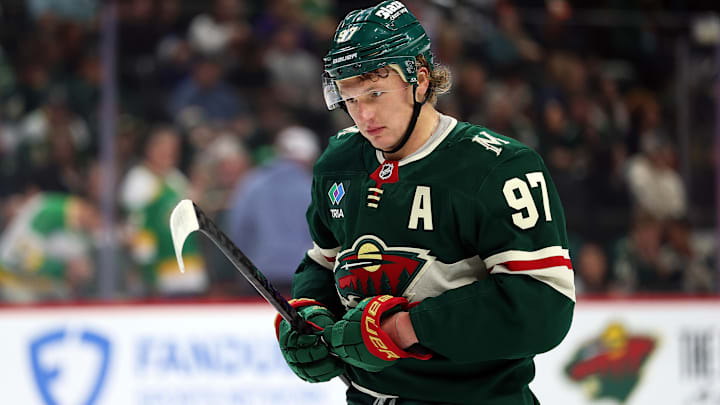Kirill Kaprizov’s massive extension signed with the Minnesota Wild this week was the first major shoe to drop in the shifting NHL contract landscape.
The NHL has been primed for a shift like this to occur. However, the flat-cap era brought about the pandemic uncertainty that delayed the inevitable. Not since the pre-pandemic contract negotiations, have contracts shown a propensity for such dynamic shifts.
Think back to Nathan MacKinnon’s extension with the Colorado Avalanche or Connor McDavid’s last contract with the Edmonton Oilers. Both deals raised eyebrows at the time. They were harbingers of stratospheric contracts to come.
Yet, those deals didn’t quite materialize. Some stars, like Toronto Maple Leafs captain Auston Matthews, chose to punt. He signed a four-year extension, likely anticipating the cap would eventually go up again.
Last season, Leon Draisaitl took advantage of the first inklings of the new rising cap era. His $14 AAV, while eye-watering at the time, pales in comparison to what Kaprizov signed for.
Now, with the cap heading to the moon, other stars stand to cash in. Jack Eichel could get a raise from his current $10 million AAV. Artemi Panarin could still score one last big deal. Martin Necas will look to cash in as well.
But the biggest fish of all is Connor McDavid. McDavid set the tone for NHL contracts once, and he’s likely to do it again. This time, the bar could be set even higher than the first time he did it.
The consensus had been that if Kaprizov signed first, McDavid would follow suit soon after. So, the Oilers and McDavid are now on the clock to get a deal done. However, there’s reason to believe the deal could wait just a tad longer.
Kaprizov could have jumped gun to sign extension
There’s reason to believe that Kirill Kaprizov could have jumped the gun to sign his extension. The salary cap, when first instituted, came with a safety pin. No single contract could exceed 20% of a team’s cap allocation.
That provision was put into place to avoid signing a player for a cap hit, say, half of a team’s cap allocation. If not for that provision, there’s no telling what some maverick GMs could have done.
As it stands, the maximum 20% cap allocation would work out to a cap hit of $19 million AAV. That’s the maximum Connor McDavid could sign for if he inked his deal today.
So, why not wait till after July 1 to resign? At that point, the cap will officially go up from $95.5 million this season to $113.5 million. Once the cap goes up, the max cap hit would go up to $22 million or so.
That scenario would give McDavid, among other stars, a higher threshold to play with. McDavid could become the first NHLer to hit the $20 million AAV mark. Sure, one million here or there wouldn’t make a huge difference, but psychologically, it would.
In the business world, resistance levels are psychological barriers that keep industries from reaching certain levels. Once that resistance level gets breached, it’s off to the races.
Perhaps the Oilers would like to avoid poking through that resistance level. But if the Oilers are unwilling to do so, you would have to think there’s another club willing to bust through it.
So, fans shouldn’t be surprised to find McDavid delaying his next contract by a few months just to hit a major contract milestone. The difference between $19 million and $20 million may not be gargantuan, but it could be one so significant that it could entirely reshape the NHL contract landscape.
